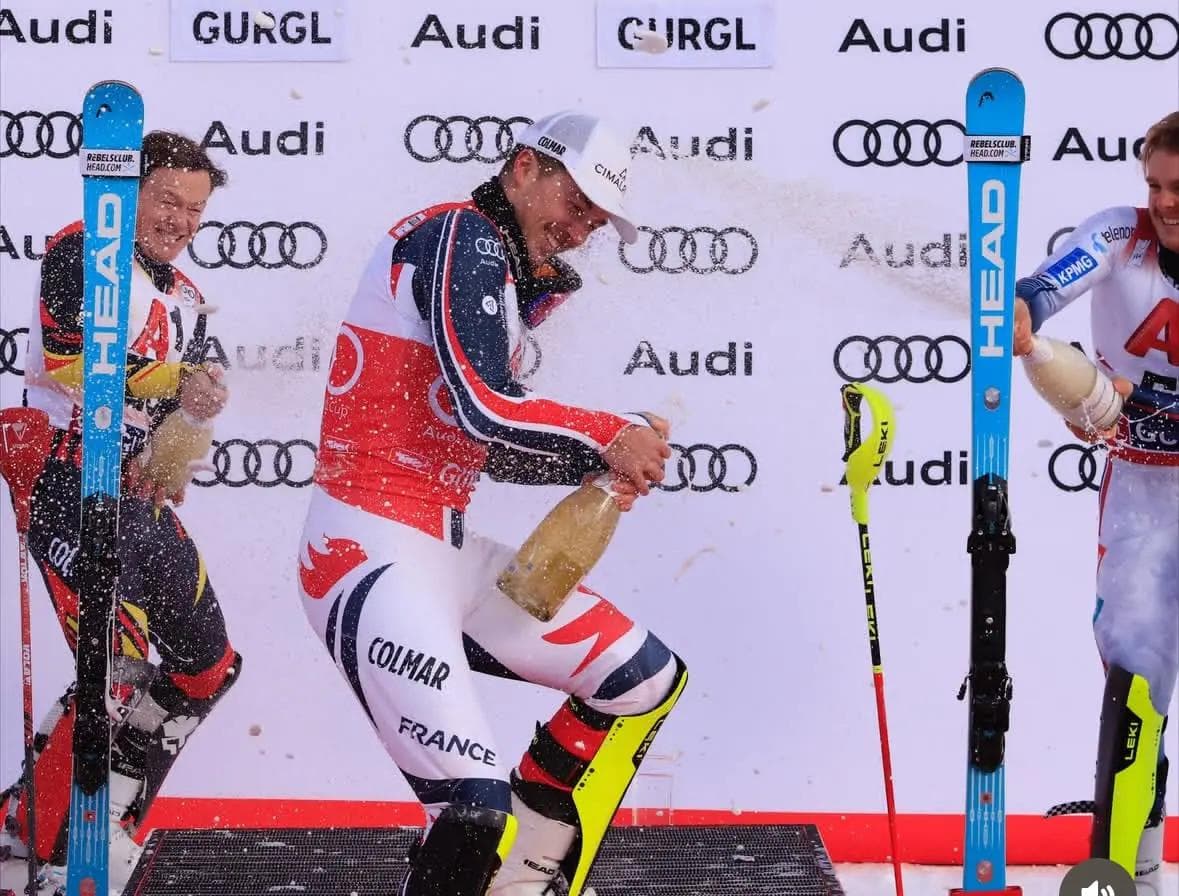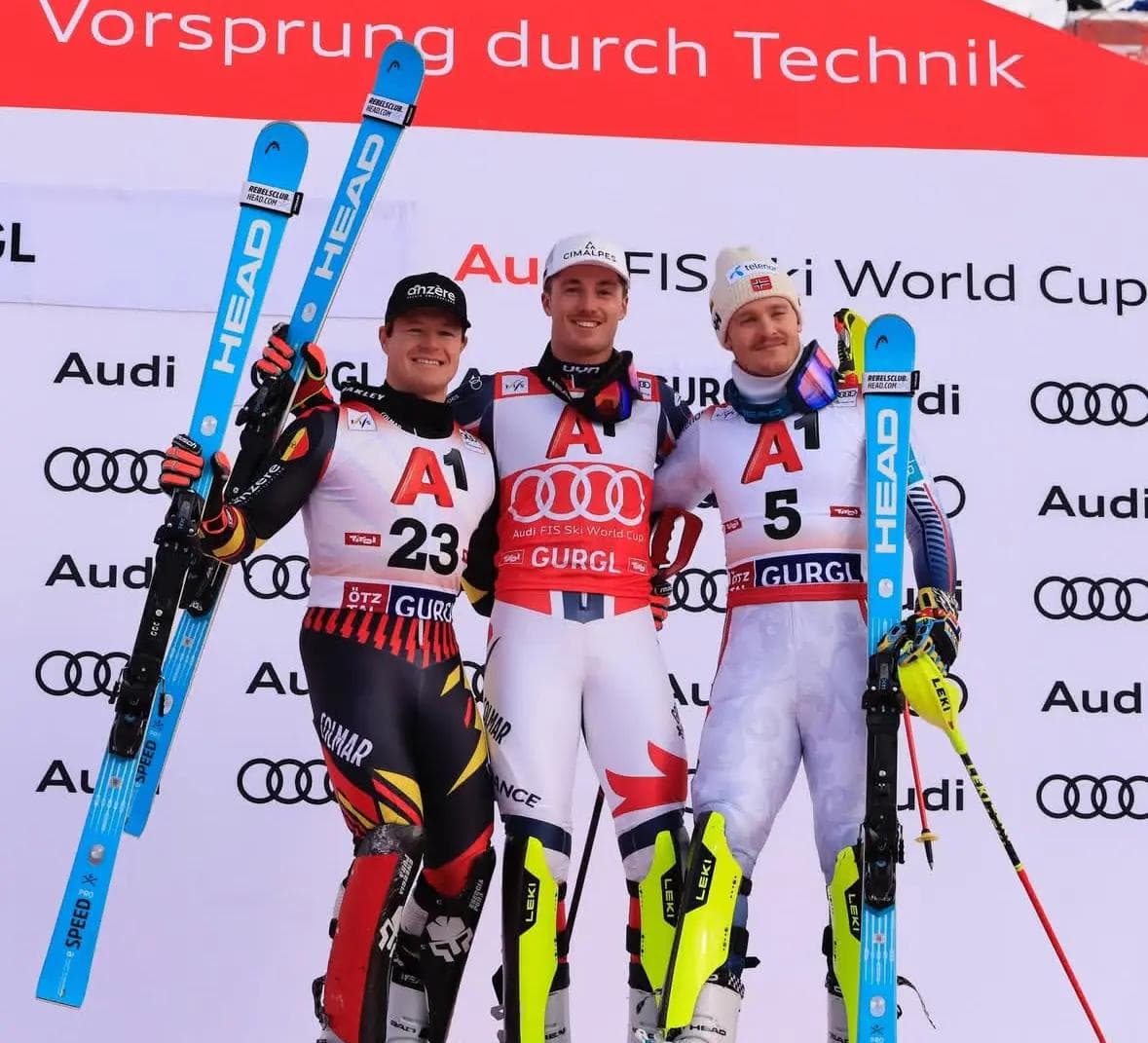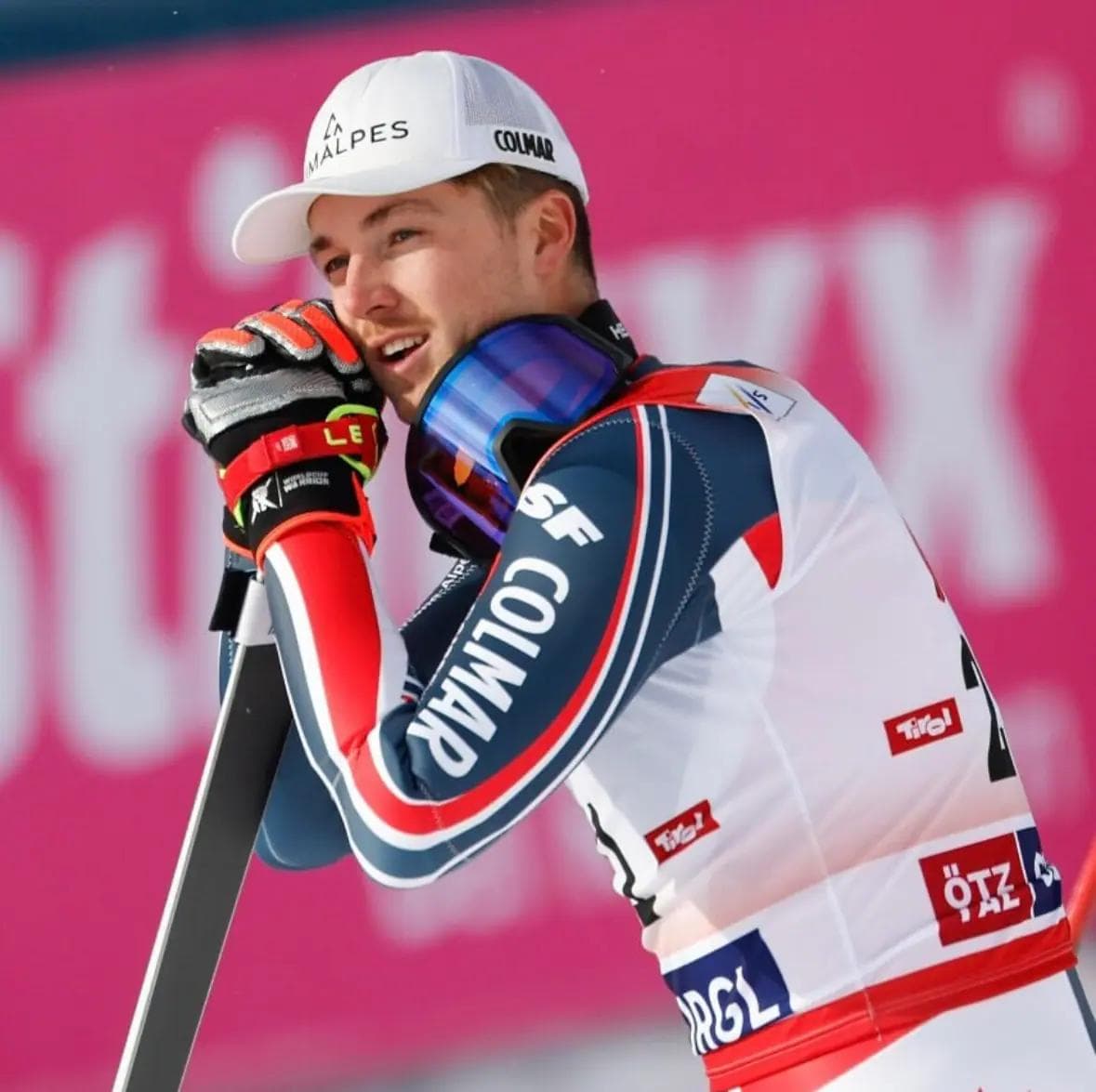
Traditional champange shower at the podium in Gurgl, Austria.. © FIS Alpine
French Underdog Takes First World Cup Win as Belgium Claims Historic Slalom Podium in Gurgl
Published Date:
Surprise Results Dominate Second Slalom of 2025-26 Season
The second slalom race of the 2025-26 World Cup season in Gurgl, Austria on November 22 produced the kind of result that sends ripples through the technical discipline. France's Paco Rassat, a 27-year-old who's spent his career firmly in the middle of the pack, won his first World Cup race. More remarkably, Belgium's Armand Marchant finished second—his country's first-ever World Cup podium in any discipline.
Norway's Atle Lie McGrath, who held a comfortable 0.67-second lead after the first run, couldn't convert it into victory, finishing third after bleeding time throughout his second run. It's the sort of collapse that warrants scrutiny, particularly given the calibre of skiers who failed to capitalise on starting positions in the top ten.
The result follows last weekend's season opener in Levi, Finland, where Lucas Braathen took the win. Braathen struggled in Gurgl, managing only a mid-pack finish after errors on the steep upper section. The early-season form book is proving unreliable, which either signals an unusually competitive field or technical inconsistency among the established contenders. Time will tell which.

### First Run Sets Up Tight Field
The opening run saw McGrath establish his lead with a dominant performance, finishing 0.39 seconds ahead of Norway's Timon Haugan. Switzerland's Tanguy Nef slotted into third, just 0.17 seconds behind McGrath. The top ten were separated by a mere two-thirds of a second—tight margins that left everything to play for in the second run.
Clément Noël, typically a strong first-run performer, posted 52.60 seconds but couldn't maintain the aggression needed throughout the course. Henrik Kristoffersen, in bib three, failed to find any rhythm. These are skiers who should be challenging for podiums, not finishing outside the top positions after the first run.
Marchant qualified eighth after the first run with bib 23—a respectable position but hardly one that suggested a podium was imminent. Finland's Edvard Hallberg, who podiumed in Levi, backed up that result by qualifying second alongside Nef, suggesting his home-snow performance wasn't a fluke.
Team USA had a forgettable day. Benjamin Ritchie finished 44th, Jett Seymour 41st, and Luke Winter recorded a DNF on what racers described as an icy course. None qualified for the second run, continuing a concerning trend for American men's slalom that extends beyond this season.
### Second Run Produces Chaos
The second run course proved treacherous for the favourites. Austria's Dominik Raschner, starting fifth, posted a time that held up through eleven subsequent racers—an unusually long stint in the hot seat that indicated how difficult conditions had become.
Rassat, starting from eighth position overall, executed what can only be described as a clinical second run. He undercut Raschner by 0.70 seconds, posting both the fastest second run and the fastest combined time of the day. With thirteen skiers still to come—including multiple World Cup winners—few gave him any chance of holding on.
Then the implosion began. Marchant appeared poised to take the lead, 0.31 seconds up at the top section, but a mistake cost him momentum. He attacked to make up time and came within 0.07 seconds of Rassat—close enough for second, but the win had slipped away.
Linus Strasser, starting fourth-last with a significant first-run advantage, surrendered it all on the top section, finishing 0.76 seconds back. Haugan, with more than half a second in hand, made small errors that accumulated into a 0.29-second deficit. Nef lost time early and finished 0.65 seconds behind.
Hallberg's second run deserves particular attention. He posted the fastest top section of the second run and held the lead deep into the course before straddling a gate near the finish. It was the kind of aggressive skiing that nearly produced another podium but instead resulted in a DNF—a reminder of how fine the margins are at this level.
McGrath, starting last with that comfortable 0.67-second cushion, simply didn't have it in the second run. He lost time throughout and finished third. For a skier with seventeen career podiums and three wins, failing to convert a lead of that size raises questions about whether he's carrying an injury or simply had an off day.

### What This Result Actually Means
Rassat's win is a genuine surprise, but context matters. This is a skier who's been competing on the World Cup circuit without threatening podiums, suddenly finding form at twenty-seven. His post-race comments—"This is insane! I don't know what to say"—suggest he's as surprised as anyone. Whether this represents a genuine breakthrough or a one-off result in unusually challenging conditions remains to be seen.
Marchant's second place carries more weight when you consider his background. His 2017 crash in Adelboden shattered his leg in thirteen places. The fact he returned to competition after two years off skis is noteworthy; the fact he's now podiumed is remarkable. Belgium has never been a factor in World Cup alpine racing, which makes this result historically significant for the country's programme, even if it doesn't materially change the competitive landscape.
The broader concern is the inconsistency among established contenders. Braathen wins in Levi, then struggles in Gurgl. McGrath dominates the first run, then can't close it out. Kristoffersen and Noël fail to factor. Either the field has genuinely compressed—possible but unlikely—or the top skiers are struggling with early-season form.
The course conditions in Gurgl appeared challenging, with multiple skiers describing it as icy and several mentioning the technical difficulty of the second run setup. That might explain some of the chaos, but the best slalom skiers should be able to adapt to varying conditions. That so many couldn't suggests we're in for an unpredictable season, which is either refreshing or concerning depending on your perspective.
The men's slalom circuit now takes a three-week break before resuming December 14 in Val d'Isère. That gap gives the favourites time to regroup and assess what went wrong in Austria. It also gives Rassat time to process whether he's actually turned a corner or simply had the race of his life. The women's slalom continues in Gurgl on November 23, where it will be interesting to see if similar unpredictability emerges or if the established order reasserts itself.



